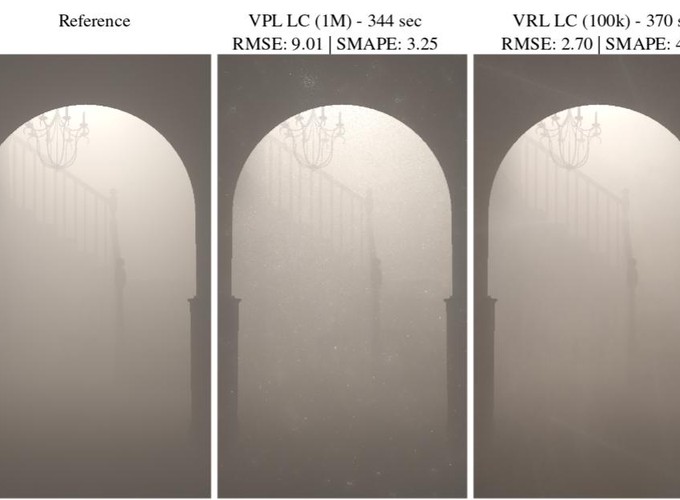Abstract
Virtual ray lights (VRL) are a powerful representation for multiple-scattered light transport in volumetric participating media. While efficient Monte Carlo estimators can importance sample the contribution of a VRL along an entire sensor subpath, render time still scales linearly in the number of VRLs. We present a new scalable hierarchial VRL method that preferentially samples VRLs according to their image contribution. Similar to Lightcuts-based approaches, we derive a tight upper bound on the potential contribution of a VRL that is efficient to compute. Our bound takes into account the sampling probability densities used when \Changed{estimating VRL contribution}. Ours is the first such upper bound formulation, leading to an efficient and scalable rendering technique with only a few intuitive user parameters. We benchmark our approach in scenes with many VRLs, demonstrating improved scalability compared to existing state-of-the-art techniques.
